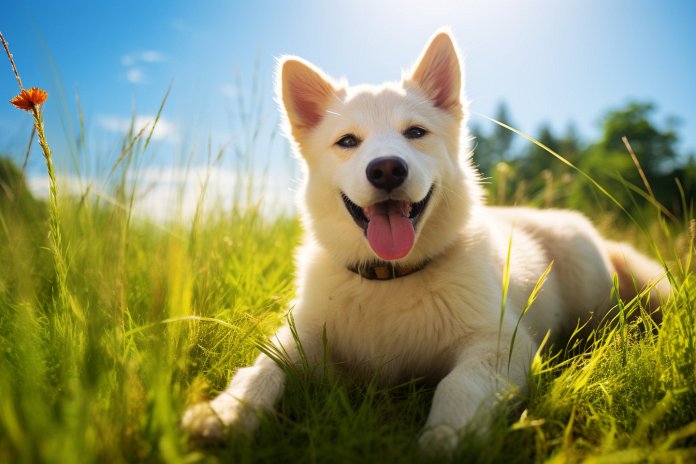
We live in a busy world where time is always running out. This affects not only us but also our family dogs, who are highly attuned to our emotions. If your dog is barking excessively, it may be a sign that they are not getting enough attention or exercise. Dogs can become impatient and act out when they feel ignored. In this article, we will explore the signs of an impatient dog and how our busy lifestyles can contribute to their behavior.
Signs of an Impatient Dog
Does your dog bark incessantly when it’s mealtime or just because they can? This demanding behavior can be frustrating and can drive you crazy. Dogs are clever creatures that quickly learn what works to get what they want. This includes barking for treats, staring, whining, and even raising their paw. If you give in to their demands, they will continue to exhibit this behavior.
Our busy lives affect our dogs in various ways. For example, while you’re trying to do housework, your dog may join in by bounding around the living room. Dogs mirror our energy and can become restless and agitated when they pick up on our stress. This can lead to them acting out, such as snapping at other dogs or becoming aggressive with children.
Body Language and Other Signs
In addition to barking and demanding behavior, an impatient dog may exhibit other signs such as growling, staring, head tilting, snapping, and raising their paw. They may also become aggressive towards other dogs or snap at children. Impatient dogs are sensitive to the busy vibes in the home and can mirror our behavior.
Understanding Impatience in Dogs
We can’t blame our dogs for becoming impatient with us humans. Our fast-paced lives can seem overwhelming to them, and they may long for the simpler days of their wolf ancestors. It’s important to choose a dog breed that suits your lifestyle to ensure compatibility. Active individuals may enjoy hiking with a Jack Russell terrier, while couch potatoes may prefer a Basset Hound. Living in an apartment? Consider a Cavalier King Charles or Brussels Griffon.
The Science Behind Impatience in Dogs
Studies have shown that dogs have the intelligence of a 2-3-year-old child, or possibly even older. Impatient behavior in dogs can be influenced by genetics, as well as their upbringing and environment. Patience is crucial when training dogs, as they learn at different speeds just like children. Owning a dog can have numerous health benefits, including reducing blood pressure and stress. It’s important to create a calm and patient environment for our dogs, as they give us so much in return.
Training Impatient Dogs
Dogs absorb the energy of their surroundings, so if your household is high-energy, your dog may become demanding and impatient. Training an impatient dog requires patience and consistency. Avoid yelling or giving in to their demands, as this will only reinforce their behavior. Instead, focus on positive reinforcement and provide appropriate outlets for their energy, such as exercise and mental stimulation.
Conclusion
Living in a busy world can have a significant impact on our dogs, causing them to become impatient and demanding. It’s important to recognize the signs of impatience in dogs and understand how our behavior and lifestyles contribute to their behavior. By creating a calm and patient environment, providing appropriate outlets for their energy, and training them with consistency and positive reinforcement, we can help our dogs become more patient and content.
“In a fast-paced world, our dogs feel the pressure too, and their impatience is a reflection of our own busy lives.”

Tips & Things to Know
1️⃣ Pay attention to your dog’s behavior: If your dog is barking more than usual or acting out, it may be a sign that they are not getting enough attention or exercise. Dogs can get impatient when they feel ignored, so make sure to give them the time and attention they need.
2️⃣ Understand your dog’s body language: Dogs communicate through body language, and signs such as growling, staring, and head tilting can indicate impatience. By recognizing these signs, you can better understand your dog’s needs and address any underlying issues.
3️⃣ Choose the right breed for your lifestyle: Different dog breeds have different energy levels and needs. It’s important to choose a breed that fits well with your lifestyle and activity level. This will help ensure that both you and your dog are compatible and lead to a happier, more patient pet.
Frequently Asked Questions, Answered ✅
1. What are some signs that a dog is feeling impatient?
– Some signs that a dog is feeling impatient include barking, growling, staring, head tilting, whining, snapping, and raising their paw.
2. How does our busy lifestyle affect our dogs?
– Our busy lifestyle can cause our dogs to act out and become impatient. They may mirror our behavior and become more demanding and agitated.
3. How can impatience in dogs be influenced by their genetics and history?
– Dogs with a history of mistreatment or trauma may have less patience, while puppies who witness impatience in their owners may also become impatient themselves.
4. Can impatience in dogs be trained and managed?
– Yes, impatience in dogs can be trained and managed. Owners can work on teaching their dogs basic obedience and providing them with a calm and structured environment.
5. How can adopting a dog improve our health and well-being?
– Having a dog can reduce blood pressure, relieve stress, and provide companionship. It is important to create a calm and patient home environment for our dogs in return for their generosity.